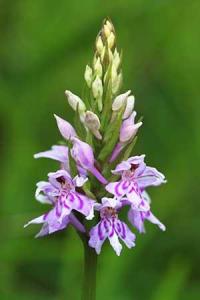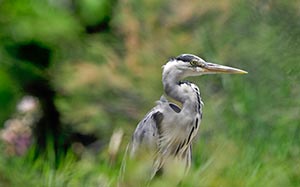
“First catch your hare” – the famous recipe instruction applies equally well to Nature Photography – be the quarry animal, vegetable or mineral. Our nature photographers travel the world in search of great shots of elusive prey – some even venturing to Norfolk. Last night’s meeting showcased the club’s nature photography with the first half dedicated to the work of Derek Grieve LRPS with the second half of shorter presentations from four others.
Derek’s presentation was unlikely to appeal to arachnophobes, entomophobes or ornithophobes as creepy crawly followed creepy crawly interspersed with birds of every feather. And no aspect of their lives is hidden from Derek’s lens. I found myself humming along - “Birds do it, Bees do it, even educated flees do it” – can’t think why!
Seriously, Derek is a superb wildlife photographer – in addition to his skill of catching up with his subjects and his knowledge of natural history. If I take a picture of a butterfly in the garden – it is just that, a picture of a butterfly in the garden. But a true nature photographer like Derek takes a good picture in the first place and then turns into a work of art - and that’s what sets Derek’s pictures alongside the best of the genre. Thank you Derek for your amusing, wide-ranging and inspiring talk – much appreciated.
In the second half John Gauvin took us to Kenya and the Masai Mara for some terrific shots of big cats and other African wildlife superstars. Particularly poignant was John’s close up portrait of a male lion, warts and all – it could well have been the late, lamented Cyril. Another interesting shot was of safari vehicles parked up round some animal as if they were on the M25. It is obvious from John’s excellent shots that he has found a way to avoid the crowds when he goes to the Masai Mara – if you’re tempted to go there it might be a good idea to have a word with him first.
Alex Swyer was much closer to home with his pictures of wild orchids in Sussex and hereabouts. There are apparently 56 species of wild orchid in Britain and Alex has found and photographed 11 of them – several of them at Box Hill. I suppose there is some advantage to flower photography in that the subject, once found, is not going to fly away or turn round and sting you – or even eat you. But some of these orchids are both small and rare – I guess the skill is in finding them without trampling on them. Alex takes items more associated with DIY or gardening than photography when he goes on an orchid hunt – think shears, gaffer tape and string – all to prepare the ground for that perfect shot.

I followed on, firstly showing off my “howitzer” lens a 150-500mm Sigma. I bought it for nature photography but it has taken more pictures of motor sport and even more of cricket – always photograph what you love! However I did show pictures of Red Kites at Grigin Farm in Wales and of herons and flamingos in the Parc Ornithologique in the Camargue. I finished with my kingfisher picture taken on a day out with the grandchildren – sometimes you just get lucky.
Anne Nagle finished the evening with some excellent prints of birds and mammals some of which we have seen before when they have won high honours both in our competitions and in county competitions. Anne made the point that there is much wildlife to be photographed in parks and zoos and it is always worth honing skills locally before heading off to the Okavango Delta or wherever – better to fluff a shot of a blackbird in the garden than of a leopard on a kill. I must apologise to Anne for my going on a bit and leaving her a shortened time to make her presentation.
I hope everyone enjoyed the evening as much as I did. Not all club members are nature photographers but the evening showed that our club has strength in depth in nature photography and our members have a wealth of knowledge to share with newcomers to the genre. The club’s thanks are due to all presenters, especially Derek.
